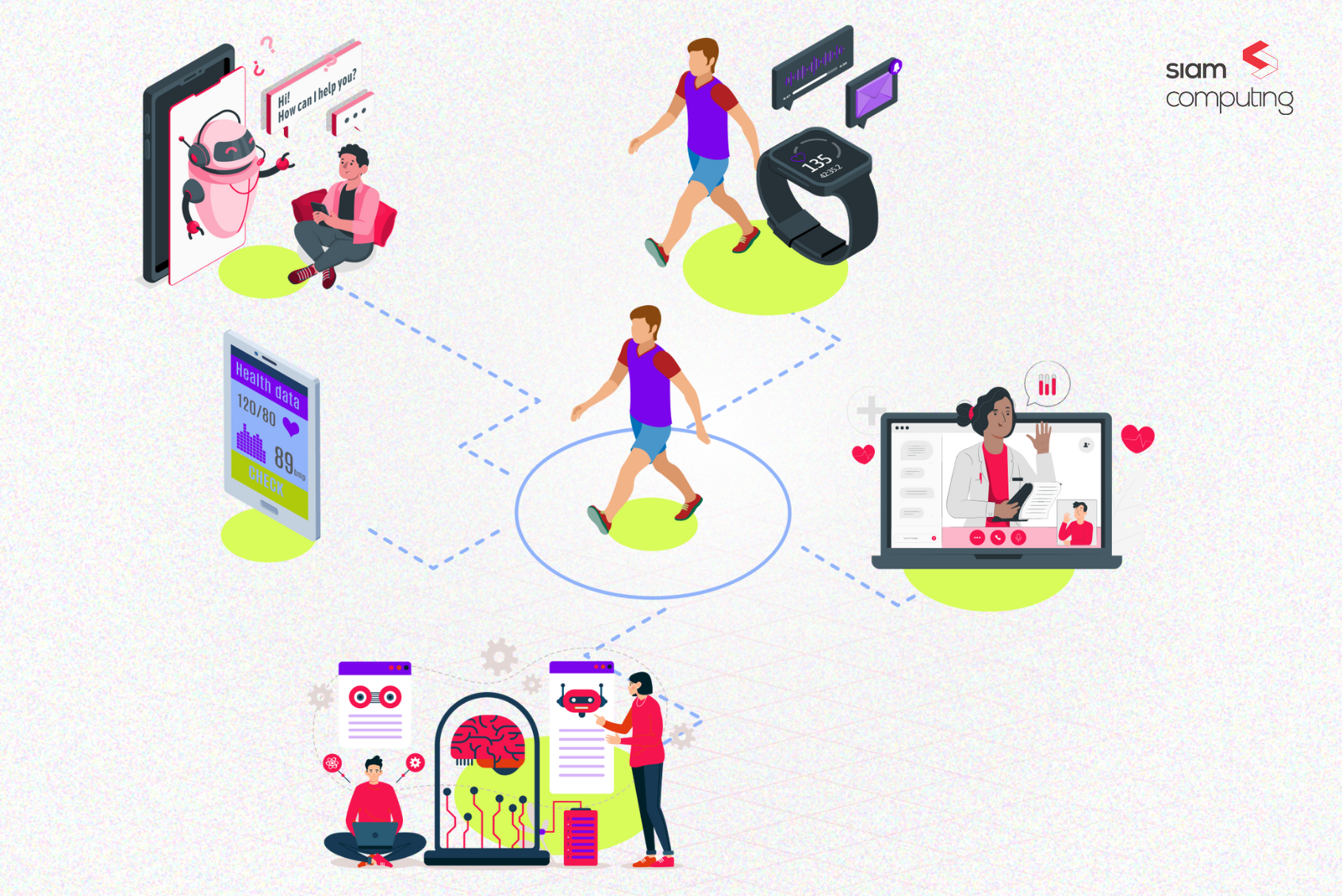Great products are built on great ideas. But have you ever wondered why not all great ideas become successful products? Do you know what is required to transform a good idea into a great product? You need to have an effective team in place that embraces a product mindset and translates the vision and mission into values and outcomes.
In this article, we will discuss how to build an outstanding product development team. Here is what you need to consider while setting up your product team:
→ Identify the key roles in your team
→ Know how to select the right team lead
→ Learn where to hunt for talents
→ Build a clear product roadmap
→ Nurture group problem-solving skills
→ Communicate your product vision clearly to the entire team
→ Inculcate the entrepreneurial spirit
→ Manage – but do not micromanage
→ Stay organized and optimized
→ Act as ‘one team’
Identify the key roles in your team
Based on the scope of your product, you need to define the key roles in your team and start building a competent team with efficient team players. You also need to understand the different verticals involved in developing and marketing a product. Here are some key roles and team structure involved in product development:
Business analysis
This includes roles like business analysts, market researchers, product specialists, etc.
Design
This includes roles like UX and UI designers
Technology
This includes roles like coders, testers, and platform specialists
Marketing
This includes roles like product marketers, content marketers, BD executives, etc.
Project Management
This includes roles like product managers, project managers, etc.
Know how to select the right team lead
As the very name reads, the team leader you hire should lead the team and channelize the talents effectively and translate them into product outcomes. Being the backbone of the team, the leader should hold the team together and extract the best out of them. Make sure that the person you hire as the lead fulfills the following requisites:
→ Good interpersonal skills
→ Strong communication and team handling skills
→ Exposure and expertise in technology
→ Exemplary soft skills and work ethics
→ Good at coordinating, tracking, and meeting deadlines
Learn where to hunt for talents
Having defined the key roles, established a competent team structure, and learned how to select the right team lead, the next step is to hunt for the talents. You can create an employee referral program and source talents from your own networks and connections. Leveraging social media platforms like Facebook and Instagram to build a positive workplace reputation helps you to attract talents. Sharing employee experiences, promoting your work culture are other ways to draw new talents towards you.
In recent years, LinkedIn has become the go-to platform to connect with talents from across the world and hire the best-fit ones for your team. LinkedIn provides you with a chance to skim through multiple profiles and get a hang of them through their peer reviews and online activities before even interacting with them.
Build a clear product roadmap
Now the entire team is set and you are already to kickstart. Wondering how to get the ball rolling? In this early stage of product development, it is imperative to introduce your team to an established and crystal clear product roadmap.
Here’s how a well-defined product roadmap will help you:
→ It will help everyone in the team to visualize the entire product development journey.
→ It will specify the amount of effort required and the resources needed.
→ The team will get a clear idea of priorities, key milestones, and indicative timeframes.
→ A solid product roadmap will ensure that all the team members are aware of the product objectives and future prospects
Nurture group problem-solving skills
In product development, interpersonal skills take a front seat compared to talent and other skills. Product development warrants collaboration on multiple levels. Design, user experience, wireframes, and prototypes are enhanced in an iterative manner. Peer reviews from internal teams and first-hand feedback from team members help to improve the product experience before even the product goes to the market.
Brainstorming sessions and daily huddles help you to nurture group problem-solving skills. Here are four important stages that every team has to go through:
→ Forming: This refers to setting up the right team and defining the roles clearly.
→ Storming: This includes brainstorming and group problem-solving activities.
→ Norming: This stage refers to developing consensus and aligning on the roadmap.
→ Performing: This is the stage where you start reaping the benefits of teamwork and start performing.
Communicate your product vision clearly to the entire team
It’s important to keep your entire product team informed of your vision. They should know the rationale behind every feature, functionality, and technical choice so that they work in complete agreement and total alignment with the big picture. Knowing the strategy behind a feature, solution, and component will not only give them clarity but also will enable them to add value to the products.
Inculcate the entrepreneurial spirit
There is a vast difference between a team that executes the tasks assigned to them and a team that takes complete ownership and holds itself accountable. The former is a good team too but that doesn’t work for a product development ecosystem. Your team members should own the product as if it’s their brain’s child. Having an entrepreneurial mindset nurtures the teams to become more innovative and solve problems faster. Especially product managers, team leaders, and project coordinators should feel, think, and act like a founder to enhance the product development process, innovate with new ideas, and mitigate risks.
Manage – but do not micromanage
While it is important to keep tabs on your teams, their tasks, and deliverables, you should also ensure that your team members shouldn’t feel micromanaged. Micromanagement is terrible and a lot of businesses have lost talents because of micromanagement. Product teams often comprise rich talents with great experiences who have zero tolerance for micromanagement. If you sense some misalignment or a need for micromanagement, you should do a complete root cause analysis. You should only figure out how to fix the system but shouldn’t end up micromanaging. Using status trackers and workflow automation tools helps you get updates without having to micromanage.
Stay organized and optimized
The different stages of developing a product can be really overwhelming, but the most important thing to keep in mind is to stay organized. Lack of organization not only costs your productivity and outcomes but also your investment and returns.
Here are some insights on how to optimize your meetings and stay organized:
→ Respect everybody’s time and use the calendar judiciously. A survey states that over 30% of an employee’s bandwidth is invested in meetings and group discussions.
→ Optimize your meetings. Conduct meetings on a need-only basis and involve only the contributors and value-adders.
→ Jot down the points to be discussed in your meetings and go to the meeting room with a clear agenda.
→ Minutes of the meetings are important. Convert your meeting insights into action items and follow them up in successive discussions.
Act as ‘one team’
Product development involves extensive processes. From design thinking and deployment to post-launch maintenance and product marketing, there are a lot of teams involved in making the product successful. But for a customer, it’s just one product. If they face slow loading features, they are not going to point out the team and technology behind it. They simply dismiss your product as a poor one. Because it’s just one product and one experience for the end-users. You should ensure that your team understands this and make them work as one team. It is important to have a positive work culture and mindset that unifies all the teams on a single vision.
Teamwork makes the dream work
While team building is not an easy feat, it’s neither a hard nut to crack. When done right, team building can become easy peasy and it feels like a cakewalk. If you have done a good amount of hard work in identifying the best talents and building a great team, you can stay rest assured and start investing in things that deserve your attention. Hope this article helped you understand the important steps in building a great product development team. Follow this space for more resourceful articles on product development trends and best practices.
At Siam Computing, we leverage cutting-edge technology to build outstanding products and mobile app solutions. Looking for expert insights on product development? Write to us at hello@siamcomputing.com. We love to offer you a free consultation with our product experts.








